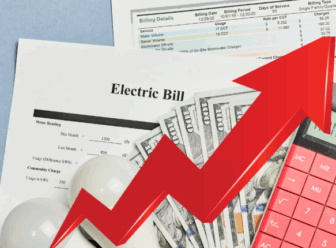The Gazette of Business and Politics
By Mike Tidwell and Jim Strong
Labor unions and environmental groups haven’t always seen eye to eye in Maryland. The state’s “green” leaders often have seemed more interested in trees than workers. And unions traditionally have focused more on short-term wages than long-term threats like global warming.
But a bill introduced last month by Gov. Martin O’Malley illustrates how mutually dependent our camps really are. That bill, if passed, would incentivize a technology as old as Maryland’s tall ships and as modern as the 21st century itself: wind power. By making Maryland a leader in the construction and deployment of offshore wind turbines, the O’Malley bill would create thousands of jobs, help stabilize electricity rates, and — oh, yeah — help solve a big part of the global-warming problem.
Here are the facts: Since 1990, a staggering 85,000 manufacturing jobs have disappeared from Maryland, many of them shipped to China, where environmental laws are often nonexistent. The proud label “Made in Maryland” once applied to everything from cars to soup cans to washing machines. It gave life to the American dream for families from the streets of Dundalk to the suburbs of Prince George’s County to the shores of Ocean City. As those jobs left, so did a proud part of our state’s middle class.
Unfortunately, poor economic policies didn’t stop there. America failed to modernize its energy systems during these same decades, accelerating the phenomenon of global warming through the combustion of fossil fuels. The impact of climate change is now on display worldwide, from increasingly weird weather across America to the ravages of sea-level rise erasing whole acres every day in Maryland.
To solve this ecological problem, we need to switch to clean energy. To solve our state’s unemployment problem, we need to start making things again. So why not make windmills? Lots of tall, graceful, ocean-based, high-tech windmills?
That’s what Gov. O’Malley wants to do. His bill is nothing short of a strategy to begin bringing manufacturing back to our state. By directing the state’s utilities to make direct investments in offshore wind power, the bill creates more than 2,500 jobs, saves consumers money in the long term and creates enough clean energy by 2016 to power nearly all of the Eastern Shore.
By guaranteeing an opening market for wind power here, the Maryland Offshore Wind Energy Act recognizes a core economic truth: No other industry promises to bring as many manufacturing jobs to Maryland over the next 20 years as wind power. None.
Modern windmills are 90 percent steel by weight. Baltimore has a major steel mill at Sparrow’s Point in need of work. We have the broader industrial capacity to assemble the turbines here, the high-tech engineers ready to play their part and the port facilities to ship the final product off to Ocean City — and all across the East Coast — for installation.
With climate scientists saying America must cut fossil fuel use as much as 80 percent by 2050, it’s not hard to see the economic future of wind power in Maryland. Indeed, in job creation, clean energy will be to the 21st century what railroads were to the 19th century and what electricity itself was to the 20th century.
But even these jobs could go overseas without the right policies at home. China announced last year that it would invest three-quarters of a trillion dollars in renewable energy production over the next 10 years, with a goal of dominating global markets. Unfortunately, the U.S. Congress is deeply divided over energy policy, so it’s increasingly up to the states to keep up with China. Delaware, New Jersey and Massachusetts have all adopted incentivizing policies for wind power in recent years. Now it’s Maryland’s turn.
The O’Malley bill, with an ambitious goal of 400-600 megawatts of offshore wind, would make our state an instant leader in the race to become a regional hub for the manufacture and servicing of windmills. That, in turn, could mean tens of thousands of jobs for our state.
This all makes good political sense for O’Malley, of course. O’Malley knows that, in the long term, voters will not support global-warming solutions that do not also create jobs. And a failure to solve global warming in the long term is a threat to the entire economy, to all jobs.
These tandem truths are what now bring key labor groups and environmentalists together in Maryland. Our goal is crystal clear: Stop sending jobs offshore to China. Start creating jobs offshore in Maryland.
Jim Strong is subdistrict director of the United Steelworkers of Maryland. Mike Tidwell is executive director of the Chesapeake Climate Action Network.




